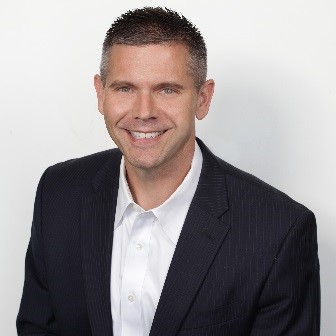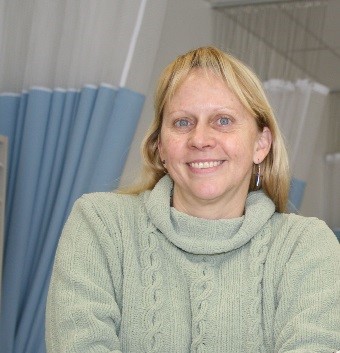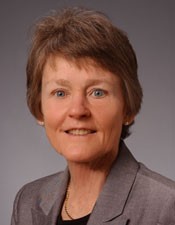The Evolution of Online Physical Therapy Education
Online education over the past few years has been more of an evolution than a revolution. Even residential programs often incorporate online tools and so-called online, or hybrid, programs are growing. This article is based on a presentation by John D. Childs, PT, PhD, MBA, FAPTA, CEO, Evidence in Motion; Therese Millis, PT, DPT, PTA Program Chair, San Juan College; Claire Peel, PT, PhD, FAPTA, Senior Vice Provost for Academic and Faculty Affairs, University of North Texas Health Science Center; Thomas P. Werner, PT, MA, PhD, Program Director, University of St. Augustine for Health Sciences, at the 2018 FSBPT Annual Meeting.
What are the Driving Forces for Online Education?
Presented by John Childs
There are lots of opportunities for disruption in higher education. There is a need for a degree that doesn’t leave students chasing debt for years afterward, so it’s creating an incredible opportunity for creative destruction, for innovation to really come in and try to take out some of those costs and deliver education using technology in highly effective and sometimes accelerated ways.
At Texas State, as an early foray into hybrid education, we pioneered the flipped classroom—essentially taking the lecture parts of the curriculum and recording that in professionally produced videos that students can watch in advance. Students can rewind, they can listen, fast forward, etc.
So we think we’re going to see more and more hybrid and online elements coming into both DPT and PTA education in much the way that it has taken root in a lot of other graduate programs.
We have hybrid partners at both Baylor University and South College. It’s a two-year hybrid program. Students and faculty live all over the country. Students reside in about thirty to thirty-five states.
When you recruit from a national applicant pool, a really interesting side benefit is that you can recruit from some of the most rural areas of the country. There are lots and lots of individuals who would love to become physical therapists who have no option to go to a PT school unless they pick up their family and move. So, both at South University and Baylor, we see anywhere between about 35 to 40 percent of our students coming from an ethnic minority, and roughly 30 to 40 percent of them self-identifying as coming from an economically disadvantaged background. I’d love to tell you that’s something we intentionally focused on. But, honestly, it’s happening organically simply because we’ve taken geography off the table.
I hesitate to use the word “online” now. I’m trying to take that word out of my vernacular because it conjures up ideas of students passively sitting in front of their computers, watching videos. And that is not at all what effective online education looks like. Students are highly engaged with faculty, both during those synchronous live sessions as well as the asynchronous activities that take place. After the didactic phase during the semester, they come to campus for “immersion labs” for twelve to fifteen days.
There’s really no such thing as an online PT program or an online PTA program because we’re obviously in a hands-on business, and so lab-based components are a huge component of all of these programs. The lab immersions are these intensive eight to nine hours a day in the lab. Some people think this exhausts students. We actually think that this is what it looks like when you’re in the clinic, so, maybe we ought to train like the clinic. I’m more enamored with our lab immersions than I am with anything we do with technology online. These lab immersions are a sight to be seen, and when they’re done well, they’re highly effective for learning.
The Story of a PTA Program
Presented by Therese Millis
San Juan College in Farmington, New Mexico, has the first online accredited program for PTA in the United States. I have to say that when I was approached about teaching an online program I was a little hesitant about moving forward from my traditional model with face-to-face teaching.
But then I started looking at discussion boards and I took an education class in online development and instruction, and that definitely opened up my eyes because it was taught well.
Over the last century, education has taken some real challenges and explored different ways that students can learn. But most, if not all of these received resistance at first.
- 1922 – Pennsylvania State College broadcasts some courses over the radio
- 1953 – University of Houston offers televised courses
- 1976 – Coastline Community College becomes the first virtual university
- 1989 – University of Phoenix is founded
- 1998 – BlackBoard is founded
- 2000s – most major universities have online component, some with degrees
- 2006 – Apple offers ITUNE U
- 2012 – Massive Open Online Courses (MOOCS)
Program Formats
Online, or hybrid, education has grown significantly. It’s not going away.
We started our first online hybrid program in 2005, and we graduated our first class in 2007. The first class had five students, and we had 100 percent retention. As we move forward, we’ve grown threefold. We have sixteen students in our next class and our pass rates are 100 percent for both online and on-campus. What we usually find is our on-campus students struggle more with the boards than our online students.
When we first got started, we went to conferences to discuss our model. At that point, we were probably one of the few health care programs around, but there’s been a lot of growth since then, and schools have all kinds of models. Most offer lectures online. Some offer night classes with labs. The students are responsible for the didactic lecture part, and so, when they come to the labs, they’re ready—they have the knowledge, they just need to know how to apply it. Other programs do weekends or every other weekend. For most of these programs, students generally cover the travel costs, but they can use financial aid. Some students have connected with each other and gotten Airbnbs together that really cut down their costs.
In our program, the student comes at the end of the semester after they’ve heard all the lectures and they stay anywhere from nine to sixteen days.
Exam Proctoring
When we started, proctoring exams was a challenge—there wasn’t anything formal put in place. So we started with the grassroots idea of getting forms out to the students, and students would walk the form to the proposed proctor. These were usually colleges and universities, but for our rural students, they were allowed to take it to vetted clinics.
However, it’s gotten a lot easier. We’ve moved to ProctorU. There’s a proctor looking at seven to eight students and they’re taught how to recognize cheating behaviors. If they see something, we will get the film footage of the student taking the exam and the proctor will note where exactly they think the student was possibly cheating. Then we do some cyber detective work. We can see when the student has accessed the exam and also see when they’ve used a cellphone to access the course information while they’re taking the test.
Then, we take the proper punishment if they are caught, because it’s pretty much hard copy, black and white, you cheated. This is of course rare, but there’s some really useful things in place for when it does happen.
Leveraging Technology for Teaching
We use several different kinds of technology. We’ve taken printed flashcards and put them online. A student actually introduced us to this. A lot of times, your students are telling you about what’s going on out there. And so we’ll explore it and use it if it’s appropriate for the program.
We also use animation to teach students about muscle groups, but we’re looking to upgrade even that. We’ll be moving to this future tool for students to learn about muscles and even interact with them. There’s an interactive lab so they can go further into this site and challenge themselves with dissecting the body.
We use a number of other tools, tools that weren’t available even ten years ago:
So, what they do for us now is they can do a case study through the ICE video. We assign them the total-knee. Then we ask them to design a home exercise program and videotape themselves doing what they’d actually do to treat it. So, you get a lot of critical thinking going on versus them just waiting until they get to the externship to figure it out.
We use Quality Matters to help train and assess teachers, which is a huge measuring tool for how to make sure that you have online integrity in teaching. We teach our instructors how to be passionate about the format and how to embed themselves into online teaching.
The Story of a PT Program
Presented by Thomas P. Werner
The Flex Doctor Physical Therapy Program, which is really what we refer to as our “hybrid delivery model,” started at our first campus located in St. Augustine, Florida, in 2005 with the launch of our first Flex DPT program.
In 2008, we expanded and opened another program at our campus in San Marcos, California, and then in the fall of 2014 we expanded again and opened another program on our third campus in Austin, Texas.
In a 2017 study of undergraduate education, 51 percent of professors and 46 percent of students wanted at least some online component to their classes in their educational programs. When asked about having the breakdown be half online and half fact-to-face, 16 percent of professors and 26 percent of students favored this breakdown. Now, to me, that’s quite remarkable if you look at the learner of today, who is eager to use technology and access their coursework using their devices and likewise access their coursework online, or at a distance.
To start our program, we first looked at the CAPTE Accreditation Handbook Standard 6K2. The handbook says the rigor of the distance education courses must be equivalent to that of the site-based courses and the engagement of students needs to be as high as the onsite equivalent. How, logistically, do you do that in these programs? As the learner enters the university, they enter the virtual or the online community. That engagement is comprised of active and collaborative learning experiences.
With flipped classrooms, which are becoming more common, the student is to come to the learning environment, or their learning spaces, prepared to engage in an interactive and collaborative fashion. Participation must also then be in challenging academic activities, there must be formative communication with the academic staff, involvement should be in enriching educational experiences, and there must be this feeling of being legitimated and supported by the university learning community.
Comparing it to onsite programs, ask yourself: by simply being present in a classroom, are you engaged? No, it’s probably not an accurate outcome measure that we should be looking at. Student motivation, though, has been linked to engagement. How I design the learning space, how I design the learning experience, how the student participates, all feeds into whether or not a student will be motivated to learn. This active learning requires the student to be motivated to learn and then likewise perform these meaningful learning experiences—thus, engaged in their coursework
The Flex DPT program at USAHS is twelve trimesters in length, so three trimesters per year; each trimester is fifteen weeks in duration and each term varies in coursework or from nine to twelve credits/term. The Flex DPT student at our university commonly graduates with far less debt than the student in our residential program, not because it’s a part-time program but because it allows for the opportunity to work. On average, our Flex DPT students are working twenty-four to thirty-two hours a week while moving through this four-year or twelve trimesters program.
The Flex students are also not actually moving to, let’s say, Austin, Texas, or San Marcos, California, and picking up the housing costs of renting an apartment for two to three years as they would be in our residential programs. With our Flex program, the students are coming almost every other weekend. We found that bringing the students in more regularly each term, or every other weekend, helped both in retention of information as well as in the application of the information and new knowledge; likewise these visits to the campus on the weekends helps the student feel more connected to their learning community.
So, let’s address this myth about online education; it can’t work in such a hands-on profession. Yes, it can, because the student is still participating in their labs or in their clinical courses during which time they are being trained to master and advance their psychomotor skillset. The lab requirements are the same at our university regardless of whether you’re in our Flex delivery program or in our residential delivery program; the difference lies only in the fact that the lab experiences for our Flex students occur on the weekends, whereas those for the residential students occur during the usual Monday-to-Friday timeframe
In regards to engagement, we require that engagement be weekly—that the student engage either with the content, with their peers, or with faculty on a weekly basis. Our outcome measures are attendance and participation. Realize though that by merely being present you aren’t necessarily engaged; you need to participate while being present. And, finally, we’re also looking at any robustness and strength of any postings or responses made by students in the online learning management system using the nine intellectual standards by Paul and Elder. This stems way back to their earlier learnings in the curriculum; meaning, all postings are assessed on clarity, accuracy, precision, and depth of response and that’s how we measure the particulars of those postings.
We must make it easy for the student to participate in the online environment too. The technology cannot stand between the student and their learning community. It’s very, very important that you spend time in faculty development truly teaching your faculty how to operate in this new learning space. Faculty members have to be leaders, good facilitators, and very timely with postings and announcements to students. They need to interact often and they must identify and nurture those who engage in their learning and likewise reward contributions of students in the virtual or online space.
We incorporate popular online communities and tools into the learning space itself, too. We use several Blackboard tools, discussion boards, wikis, blogs, video instruction, and voice-over PowerPoints in many if not all of our courses. Panopto is a nice software where faculty can create video instruction and Flipgrid allows both students and faculty to produce videos. We have students setup in groups or teams and hold office hours using Skype and Zoom. We also use games such as Jeopardy! and Kahoot! We also use ProctorU and other tools, such as Turnitin, to look at papers. And of course YouTube, Facebook, LinkedIn, Twitter, Instagram, and TED Talks all have their uses too in a course.
So, I challenge the conventional wisdom on distance education versus the “site-based course.”
Meaning, students seem to indicate that the engagement is higher in the distance education hybrid program than in the traditional face-to-face (residential) program secondary to the fact that the design and delivery of their courses are different; the nature of this design quite frankly fosters more engagement and likewise creates a more robust learning experience
How do Regulatory Agencies View Distance Education?
Presented by Claire Peel
I’m Claire Peel, the Senior Vice Provost for Academic and Faculty Affairs. I have the opportunity to oversee basically six schools and colleges, all of their health programs.
In terms of how regulatory agencies view distance education. I pulled the standards together from three groups:
- Specialized Accreditors (CAPTE)
- Regional Accreditors (SACSCOC)
- State Higher Education Boards
So first of all, under curriculum, if you have a residential course and an online course, then the regulatory agencies expect the same rigor, the same depth and breadth, the same academic standards, and the same learning outcomes. From a CAPTE perspective, we’ll look at syllabi, we’ll look at learning objectives, and we’ll look at student outcomes to assess the programs.
From the faculty perspective, I think everyone knows that CAPTE and other agencies require faculty to be qualified to teach in their assigned topics, and that’s no different for online versus residential education. But for online courses, faculty are also trained to teach using distance education methods. We also want to make sure technology and teaching support services are available.
From the student perspective, we’re looking for ways to ensure the student is the one completing the assignments. We also look at test security and integrity.
Student privacy is another big issue from the regulatory perspective. Do students, through the learning management systems, only have access to their grades, their assignments? Does the learning management system protect student privacy?
We also want to make sure that students have access to the same support services the residential students have. Those services can include tutoring, health and counseling services, disability support services, financial aid services, etc. For our programs, we have a separate website for online students. They can click and immediately get access to those services and find out how to access them if they’re not on campus. From a regulatory perspective, we also want to see if any additional fees for online students are clearly communicated to the students.
Finally, the program assessment ensures that the educational effectiveness, student learning outcomes, and student retention rates of the online program meet the CAPTE standards.
Conclusion
Presented by John Childs
Online education is anything but passively sitting in front of your computer. Technologies these days really allow students to be highly engaged with faculty in both synchronous and asynchronous environments. And so I think it’s safe to say we’re going to see more of these learning platforms be adopted in otherwise residential programs.
|

|
John D. Childs, PT, PhD, MBA, FAPTA
CEO, Evidence in Motion
Dr. Childs is the founder & CEO of Evidence in Motion (EIM), an industry leader in delivering hybrid certification, residency, and fellowship programs to rehabilitation professionals. EIM has recently been focused on forming partnerships with universities to power accelerated hybrid DPT and OTD educational programs. Dr. Childs has published more than 150 scientific papers. He is an Ernst & Young Entrepreneur of the Year and the youngest ever APTA Catherine Worthingham Fellow.
|
|

|
Therese Millis, PT, DPT
PTA Program Chair, San Juan College
Dr. Millis has been a part of distance education in Physical Therapist Assistant education for 15 years. She played a primary role in launching San Juan College’s online PTA Program in 2006. She received the annual Annabelle Friddle Outstanding Faculty award for her role in program development and teaching with San Juan College’s online PTA Program. Once the distance education part of the program was rolled out, the program received the 2005 -2006 Innovation of the Year Award (League for Innovation for Community Colleges), 2007 second standing Exemplary Initiatives Award, and an honorable mention for the Bellweather Award. The program continues to be a huge success at San Juan College and attracts students from all over the United States.
|
|

|
Thomas P. Werner, PT, MA, PhD
Program Director, University of St. Augustine for Health Sciences
Dr. Werner is DPT Program Director and Campus Director at the University of St. Augustine for Health Sciences, Irving, TX, Campus (Dallas). He is past Assistant Director of the Flex DPT Program, Austin, TX, Campus. Werner’s post-doc accomplishments include a 3-year fellowship as a theoretician at the Institute of Social Innovation, Santa Barbara, CA. His areas of teaching include research & scholarship, administration & management, and orthopedics. Werner is a post-doc graduate of an accredited executive coaching program. His scholarly pursuits include the assessment of interprofessional service-learning, the development of clinical reasoning assessment rubrics, and the outcome assessment of online educational delivery models.
|
|

|
Claire Peel, PT, PhD, FAPTA
Senior Vice Provost for Academic and Faculty Affairs, University of North Texas Health Science Center
As an experienced educator and administrator, Dr. Peel has participated in both the delivery and evaluation of online educational programs. She served on the Commission for Accreditation in Physical Therapy Education (CAPTE) for over 9 years and participated in the development of the 2016 Evaluative Standards, which include a review of distance education programs and courses. In her current position, she oversees the university’s Center for Innovative Learning, which includes review of distance education courses.
|
Read previous issues of the FSBPT Forum.